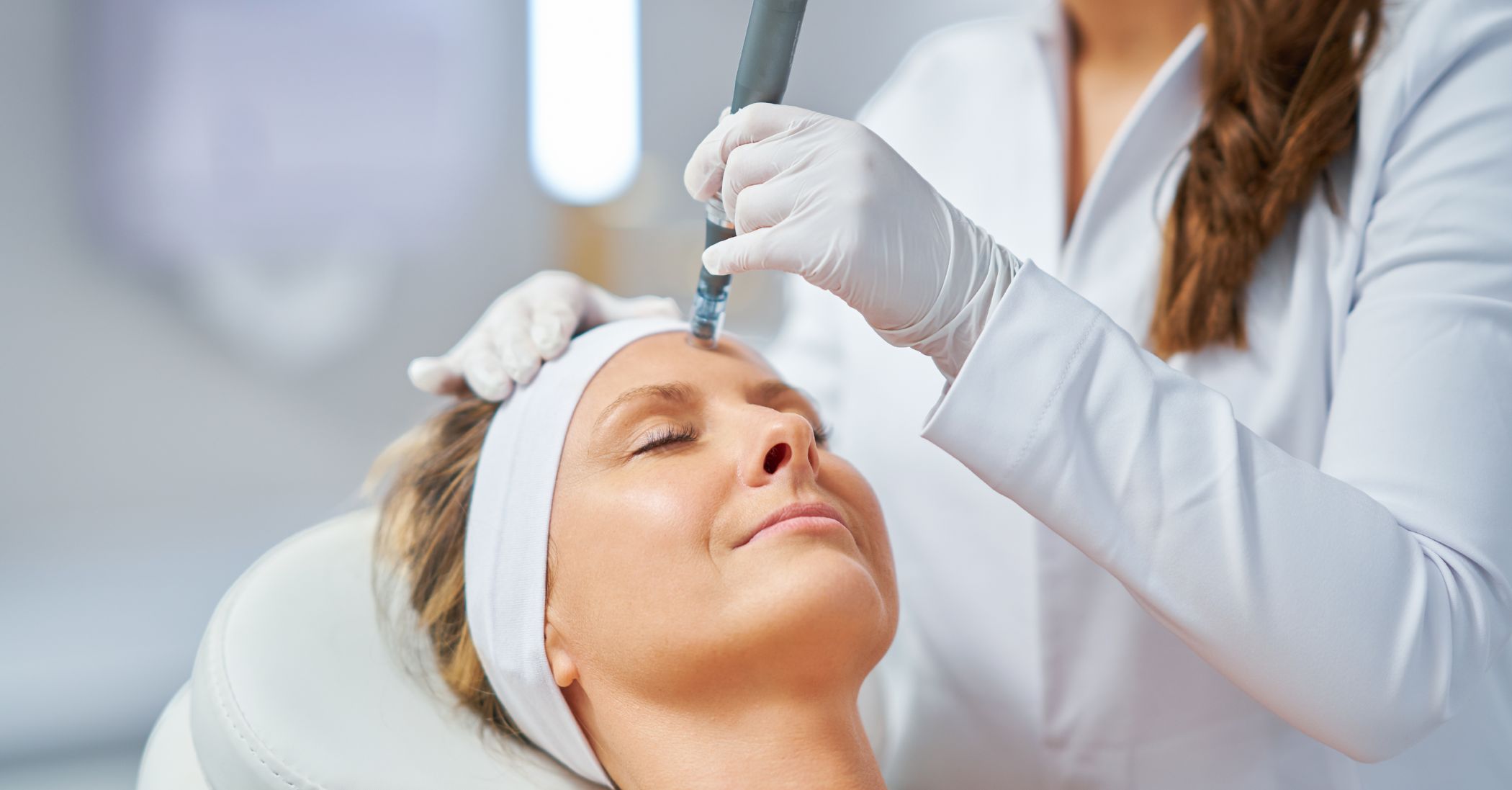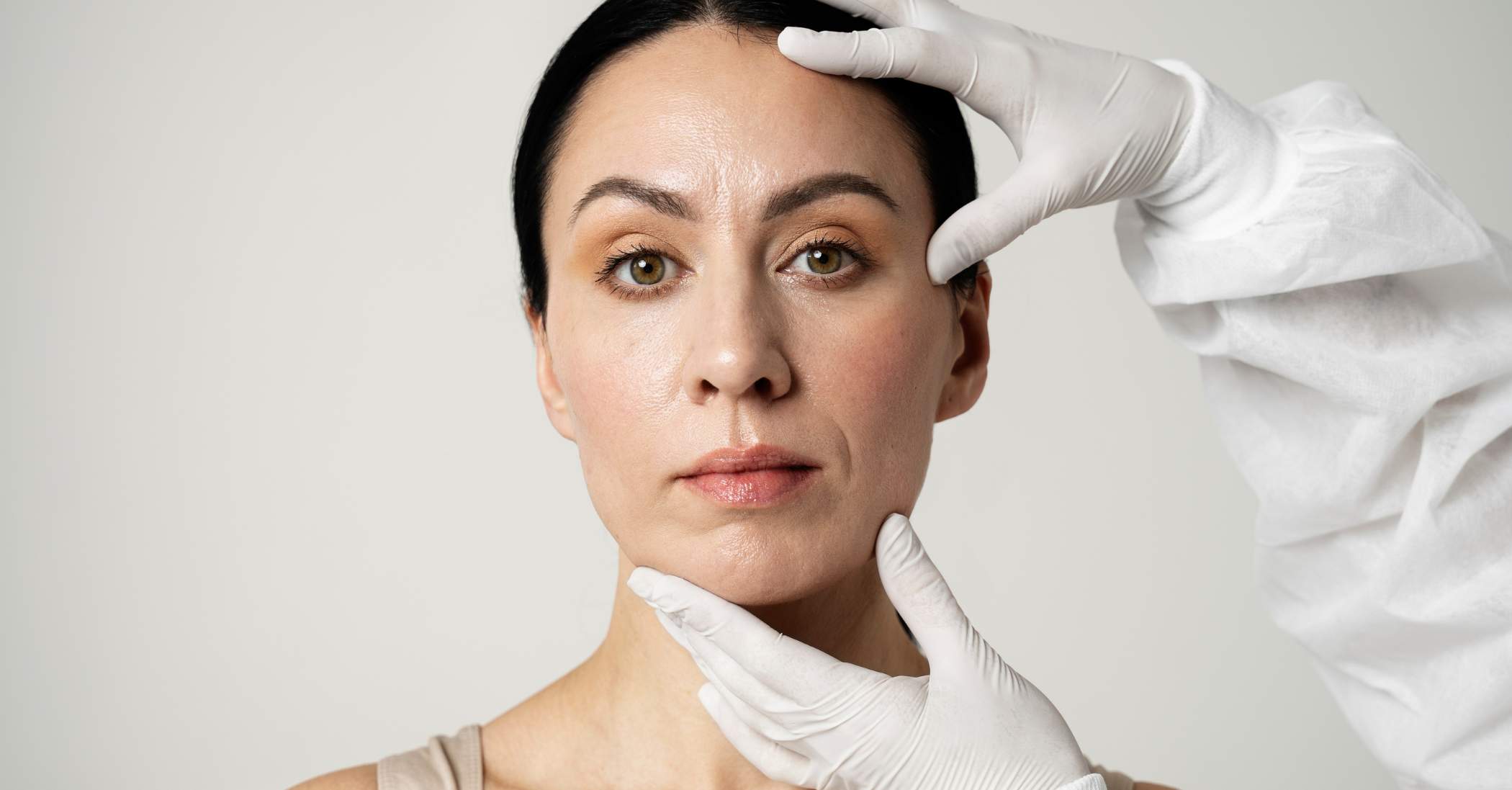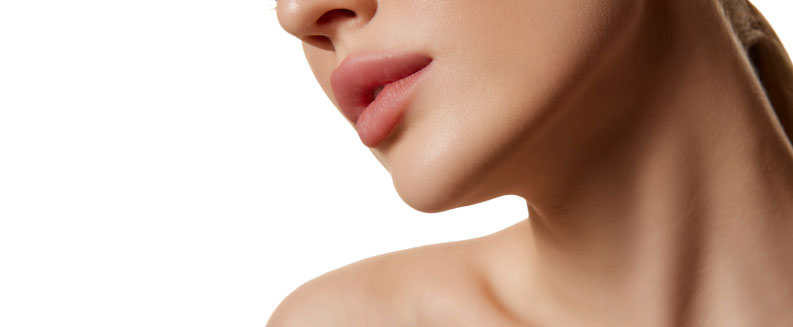Microneedling is a popular nonsurgical cosmetic procedure that has gained momentum in recent years for its ability to improve skin texture and reduce fine lines and wrinkles. This innovative treatment utilizes tiny needles to create controlled micro-injuries in the skin, stimulating the production of collagen and elastin.
In this article, we will explore the benefits of microneedling, how it works, and its suitability for different skin types.
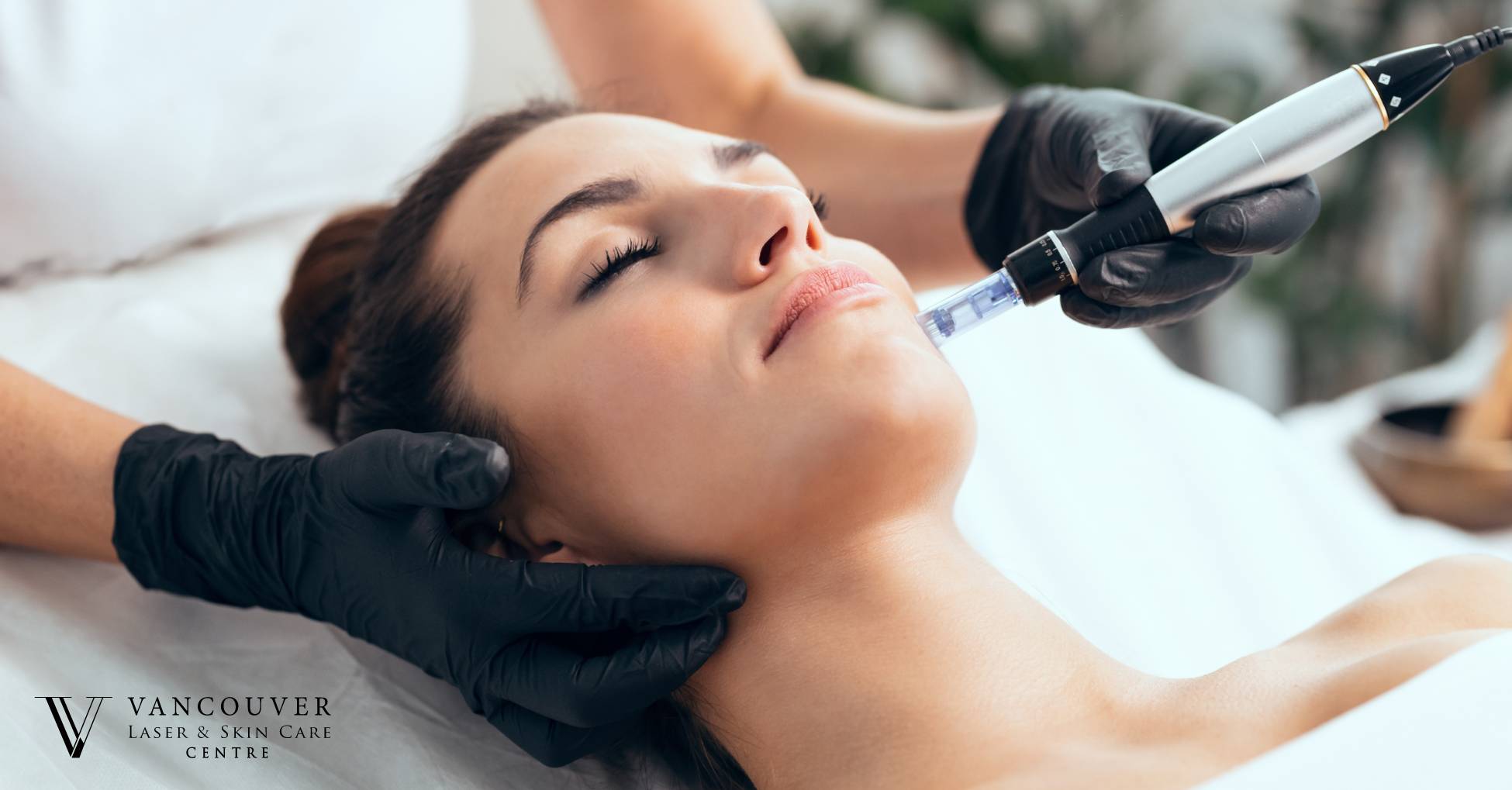
What is microneedling?
Microneedling is a minimally invasive skin treatment that involves using thin needles to create tiny holes in the surface of your skin. This controlled injury stimulates your skin’s natural repair process, prompting an increase in the production of collagen and elastin—two proteins essential for maintaining skin elasticity and smoothness.
While microneedling is most commonly performed on the face, it can also be applied to other areas such as the legs, back, and neck, where damaged or aging skin is visible. Multiple treatments may be required to achieve the desired results.
Differences Between Microneedling and Microdermabrasion
Both microneedling and microdermabrasion aim to improve skin appearance and texture, but they do so through different methods. Microneedling employs needles to create micro-injuries, allowing deeper penetration into the skin for more significant effects, particularly on issues like acne scars.
In contrast, microdermabrasion utilizes a device that gently exfoliates the outer layer of the skin, similar to sandpaper. While effective for surface-level improvements, it does not reach the deeper layers of skin where microneedling can offer more substantial benefits.
Benefits of Microneedling: A Radiant, Younger-Looking You
Microneedling offers a multitude of benefits that enhance both the health and appearance of your skin. Below are some of the key advantages:
Minimization of Fine Lines and Wrinkles
Microneedling stimulates the production of collagen and elastin, essential proteins that provide structure and elasticity to the skin. This boost in collagen and elastin helps to reduce the appearance of fine lines and wrinkles, promoting a more youthful appearance.
Improved Skin Texture
By inducing tissue remodeling, microneedling breaks down scar tissue and promotes cell turnover. This process leads to a smoother and softer skin texture, reducing bumps and evening out skin tone.
Enhanced Product Absorption
The micro-injuries created during microneedling temporarily increase the permeability of the skin. As a result, topical treatments applied post-procedure penetrate deeper, enhancing their effectiveness.
Reduction in Acne Scars
Microneedling significantly improves the appearance of acne scars by promoting collagen production and minimizing scar tissue, leading to smoother skin.
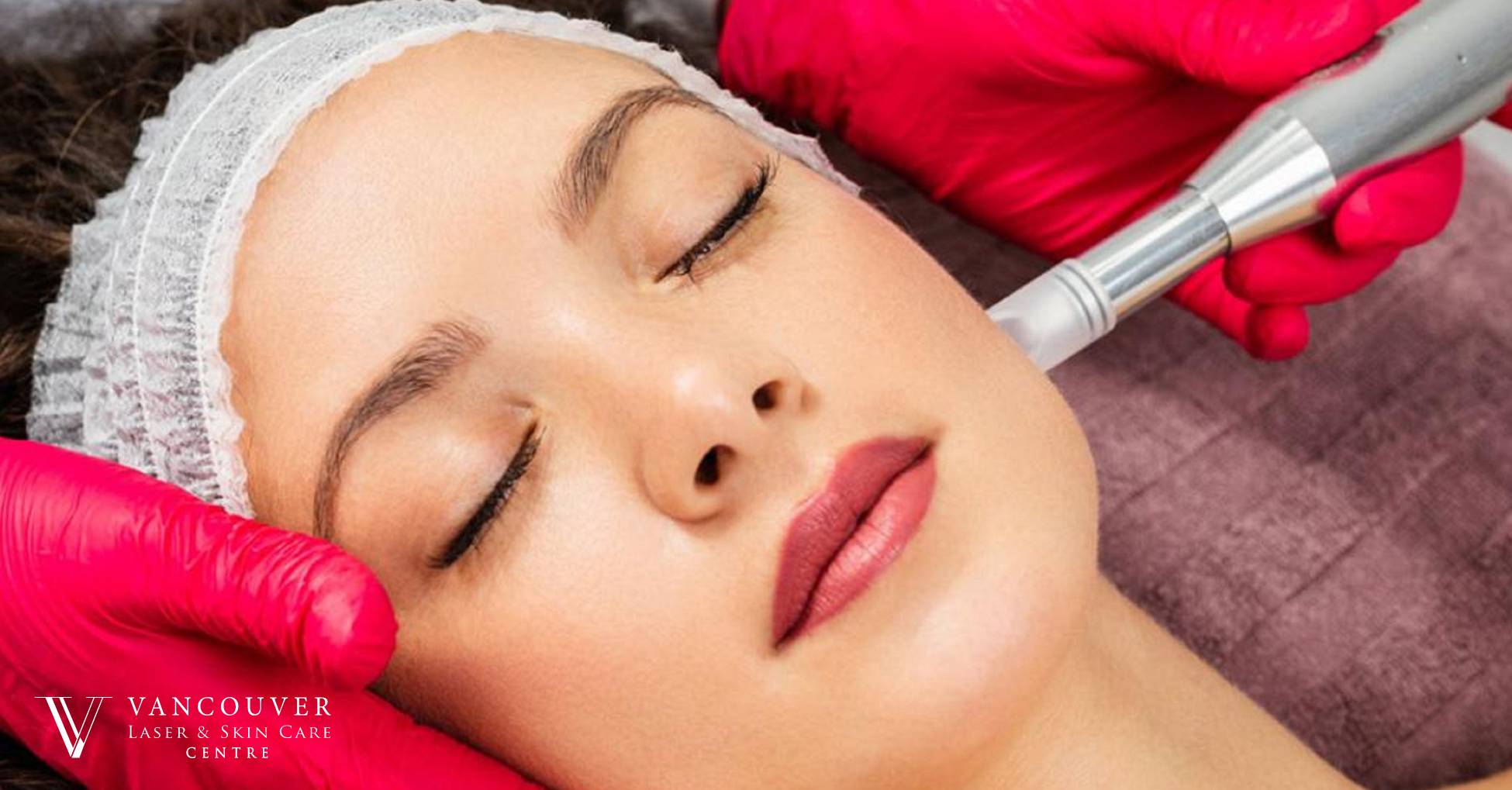
Focused Stretch Mark Treatment
The increased production of collagen and elastin through microneedling can help restore the appearance of stretch marks, making them less noticeable.
Smaller Pore Size
Microneedling also helps diminish the appearance of enlarged pores by stimulating collagen and elastin production, leading to tighter, smoother skin.
Stimulation of Hair Growth
Microneedling has shown promising results in treating androgenetic alopecia by increasing blood flow to the scalp and enhancing hair follicle activity, promoting hair growth.
Minimal Recovery Time
With shallow needle penetration, microneedling typically requires little recovery time. Most individuals can resume their normal activities shortly after the procedure.
Invisible Scarring
The microneedling technique allows for improvements in skin texture and appearance without visible surface intervention, resulting in minimal risk of scarring.
Who should avoid microneedling?
While microneedling is generally a safe procedure, certain individuals may not be ideal candidates. It’s essential to consult a qualified healthcare provider to assess whether microneedling is appropriate for you. Here are some groups who should consider avoiding this treatment:
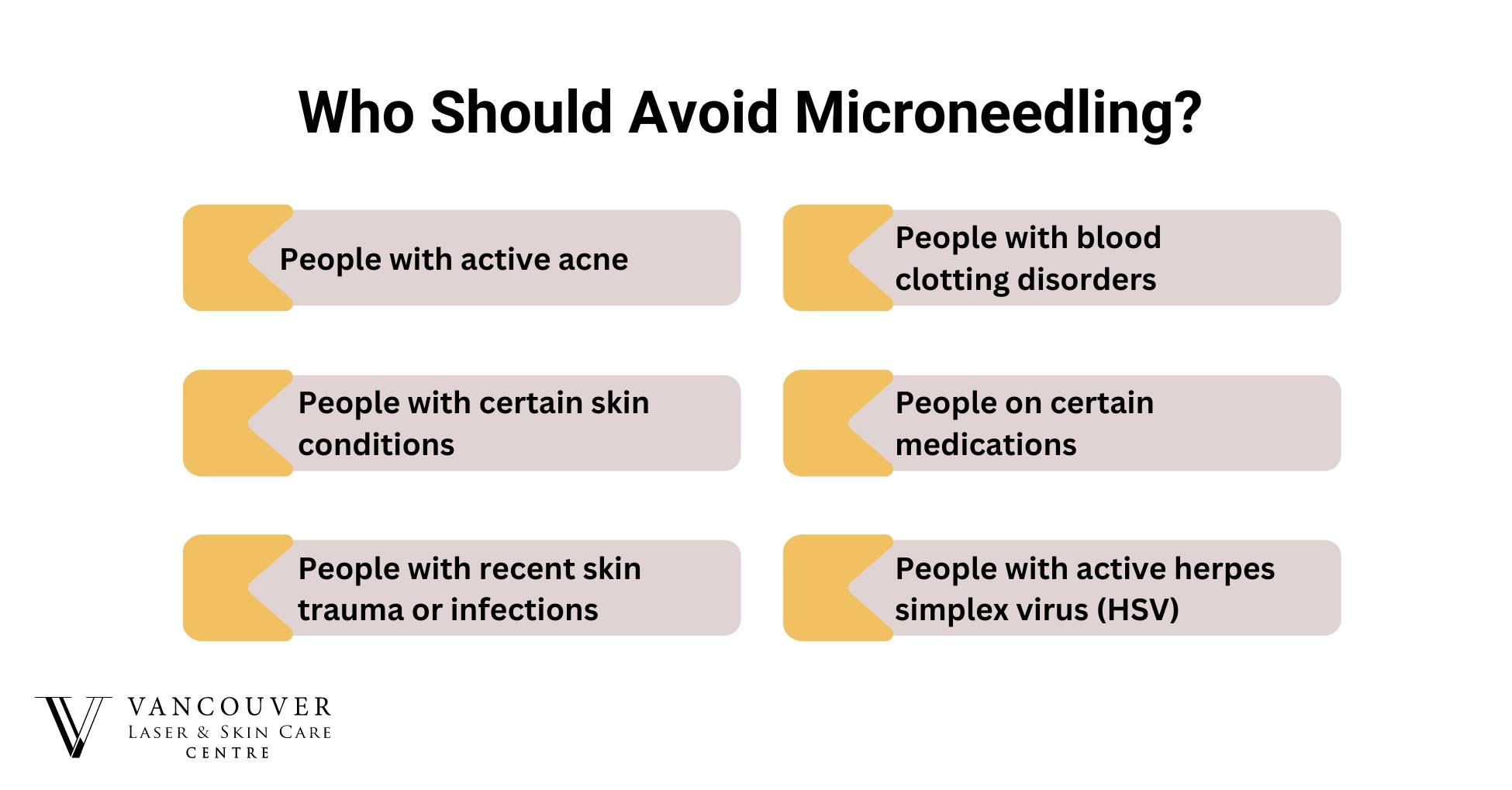
- People with Active Acne: Microneedling can irritate acne-prone skin and potentially exacerbate breakouts.
- Individuals with Certain Skin Conditions: Conditions such as psoriasis, eczema, or rosacea may require avoidance of microneedling or a consultation with a dermatologist for tailored advice.
- Individuals with Recent Skin Trauma or Infections: Microneedling can be harmful if the skin is not fully healed from injuries or infections.
- People with Blood Clotting Disorders: Those with blood clotting issues may face an increased risk of bleeding or bruising during the procedure.
- Individuals on Certain Medications: Some medications, especially blood thinners, can elevate the risk of bleeding and may make microneedling less suitable.
- People with Active Herpes Simplex Virus (HSV): Microneedling can trigger outbreaks in individuals with HSV, necessitating careful management before treatment.
Microneedling Recovery: What to Expect
Microneedling is designed with minimal downtime, making it a convenient option for many individuals. While recovery times vary based on skin type and the depth of treatment, following your practitioner’s aftercare instructions is essential for optimal results.
- Immediately After Treatment: Expect your skin to appear pink or slightly swollen. Mild sensations such as itching, stinging, or a slight burning may occur, but these effects generally subside within a few hours.
- First Day (24 Hours): Avoid touching or rubbing your face. Use a gentle cleanser and avoid harsh skincare products, such as exfoliants or retinoids, to allow the skin to recover without irritation.
- Days 2–3: Redness and swelling typically begin to subside, and light skin flaking or peeling may occur as the skin renews itself. Most individuals notice significant healing by this stage.
- After 3 Days: For the majority of patients, the healing process is largely complete within three days, allowing them to return fully to their skincare routines.
- Long-Term Improvements: While visible recovery is rapid, the full benefits of microneedling—including enhanced skin texture and tone—become more apparent in the weeks following treatment as collagen production increases.
Possible Risks and Side Effects of Microneedling
Microneedling is generally considered safe; however, it’s important to be aware of some potential risks and side effects:
- Temporary Redness and Swelling: These effects typically subside within a few days.
- Mild Discomfort or Pain: Most individuals do not experience severe pain or discomfort during or after the procedure.
- Bruising: Bruising may occur, especially if the microneedling device penetrates deeper into the skin.
- Infection: Although the risk is low, there is a slight possibility of infection, particularly if proper hygiene is not maintained.
- Scarring: While rare, scarring is more likely with deeper needle penetration.
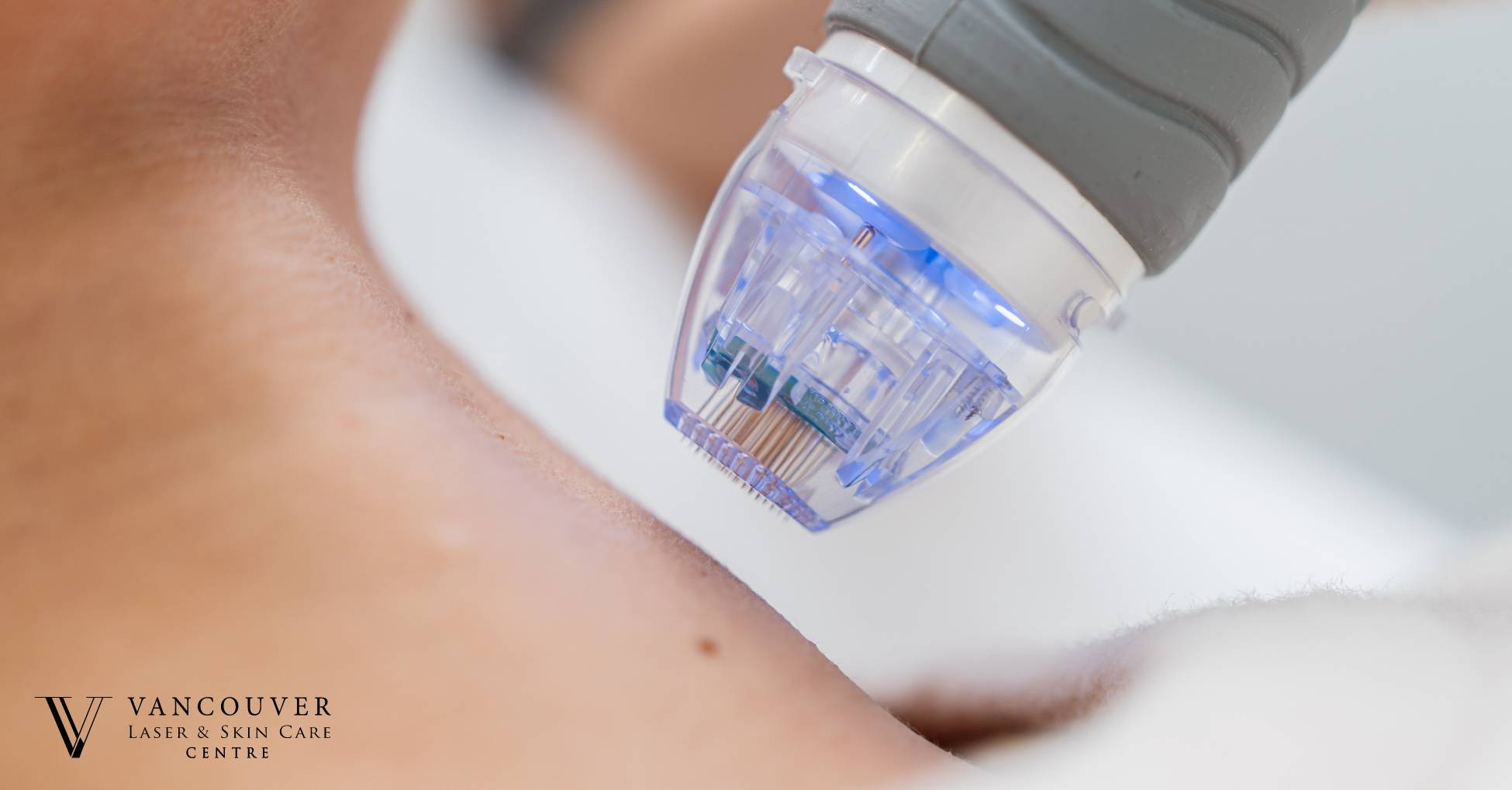
Microneedling at Vancouver Laser: Rejuvenate Your Skin
At Vancouver Laser, we provide exceptional microneedling services in Vancouver. Our skilled skin professionals help you look and feel healthier and more youthful than ever. With highly trained staff and cutting-edge technology, we ensure that every procedure is both safe and effective.
Why choose microneedling at Vancouver Laser?
- Experienced Professionals: Our practitioners are highly qualified and experienced in the microneedling process, ensuring that all procedures are performed correctly.
- Latest Technology: We utilize the most advanced microneedling equipment to minimize discomfort and achieve outstanding results.
- Customized Treatment Plans: Each treatment plan is tailored to the individual patient’s skin concerns and goals, leading to more effective outcomes.
- Safety and Comfort: Your safety and comfort are our top priorities. We adhere to strict hygiene protocols and focus on creating a relaxing environment.
- Comprehensive Consultations: Our team conducts thorough assessments prior to microneedling, providing detailed information and guidance tailored to your needs.
FAQs
1. How long do microneedling results last?
Microneedling results can last several months, depending on factors like treatment depth and individual healing. Follow-up sessions are recommended every 3 to 6 months to maintain results.
2. How painful is microneedling?
Most patients report mild discomfort during microneedling. Individual experiences vary, but numbing cream is usually applied beforehand to ease any pain.
3. Will I look bad after microneedling?
Microneedling can cause temporary redness and swelling but typically does not lead to long-term negative effects. Skin may look flushed immediately after treatment but improves within days.
